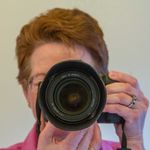 Adobe Community
Adobe Community
- Home
- Stock Contributors
- Discussions
- Re: Bad, bad photograph! – How to improve?
- Re: Bad, bad photograph! – How to improve?
Copy link to clipboard
Copied
Hello
Firstly, I have no illusions about this photograph, It’s abysmal and I wouldn’t dream of submitting it.
However, I was hoping someone might offer some guidance on what I could have done differently to achieve a better result.
I’m a beginner trying to teach myself photography with quite mixed results so I would be very grateful for any tips that might help me improve.
It was taken on a Panasonic GH4 using the 12-60 kit lens. I had it set to aperture priority and zoomed in all the way. The aperture was 5.6 ( the widest available to me). The shutter speed was 1/100, and ISO 200.
It was taken hand-held, early this morning under a fairly bright but overcast sky.
I’ve not done any post processing so as not to confuse the issue.
 3 Correct answers
3 Correct answers
Hi, the first thing that needs to be done is to increase the exposure to 1/1000 to remove the wing and head movement. The aperture is also a problem because the subjects are too far apart.
Ralph is correct in that you need a much faster shutter speed to capture moving objects. 1/100 is only good for completely stationary objects, and depending on how steady your hand is, might require use of a tripod. Also, if you were already at ISO 200, increasing the shutter speed 10x probably would have resulted in an objectionable amount of noise. Photographing birds is perhaps a bit too challenging for a beginner. Start with things that don't move !
Study the exposure triangle (shutter speed, f stop and ISO) and understand thoroughly how each setting interacts with the other on your camera.
Copy link to clipboard
Copied
Just to add, I had the camera set to auto focus.
Copy link to clipboard
Copied
Hi, the first thing that needs to be done is to increase the exposure to 1/1000 to remove the wing and head movement. The aperture is also a problem because the subjects are too far apart.
Copy link to clipboard
Copied
Ah, thanks so much for that, really good to know. I’ll give it another bash tomorrow.
All the best - Susie
Copy link to clipboard
Copied
Ralph is correct in that you need a much faster shutter speed to capture moving objects. 1/100 is only good for completely stationary objects, and depending on how steady your hand is, might require use of a tripod. Also, if you were already at ISO 200, increasing the shutter speed 10x probably would have resulted in an objectionable amount of noise. Photographing birds is perhaps a bit too challenging for a beginner. Start with things that don't move !
Copy link to clipboard
Copied
Thank you, that’s very useful advice. I shall have my tripod all set up and ready tomorrow morning.
Wow, there are so many settings to get your head around. I think you’re right about birds being a bit of a challenge. I might have a go at slugs!
All the best - Susie
Copy link to clipboard
Copied
Study the exposure triangle (shutter speed, f stop and ISO) and understand thoroughly how each setting interacts with the other on your camera.

